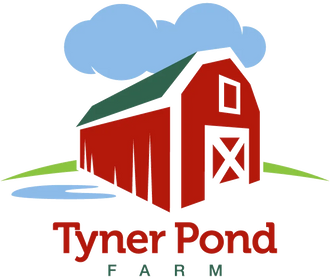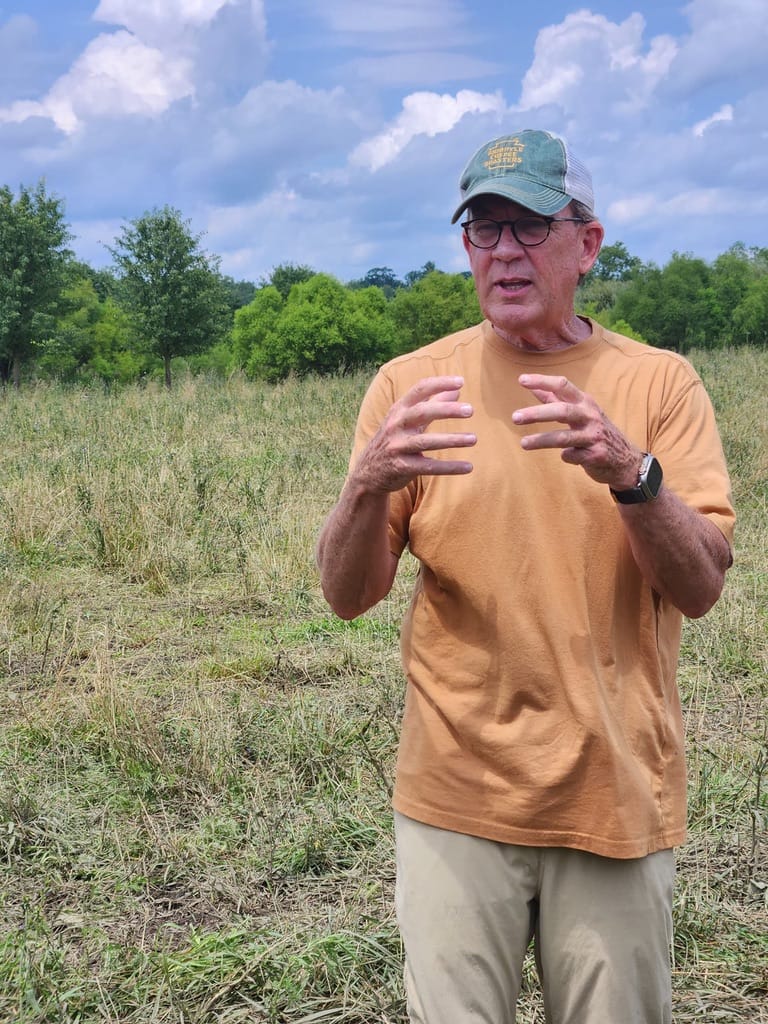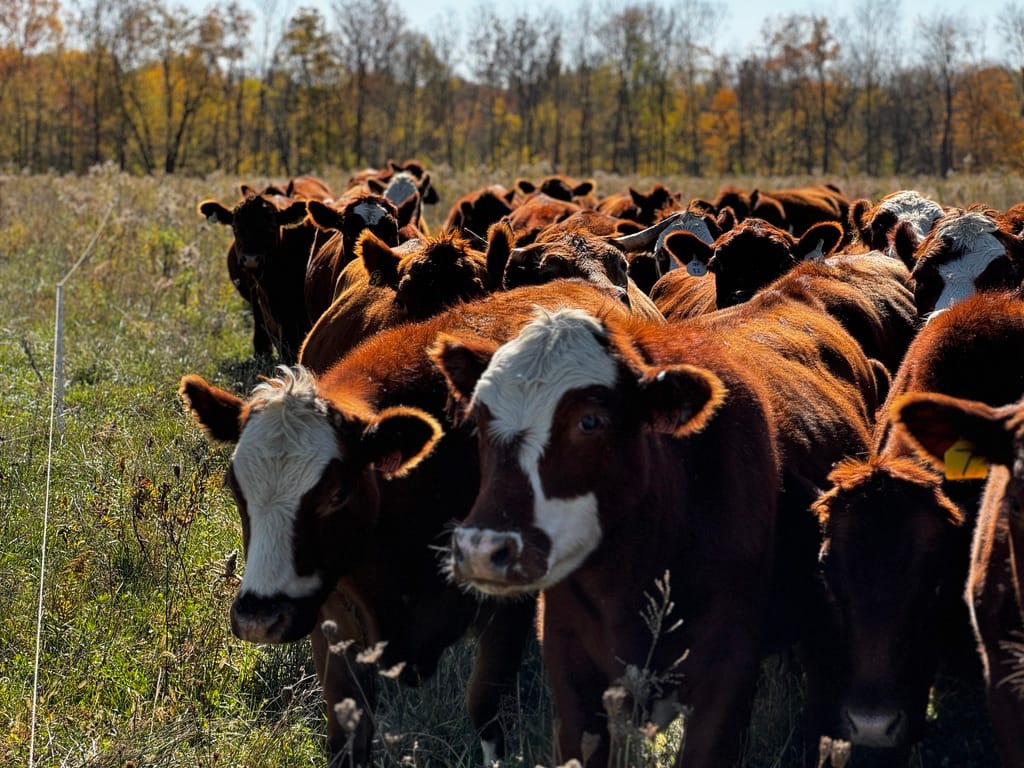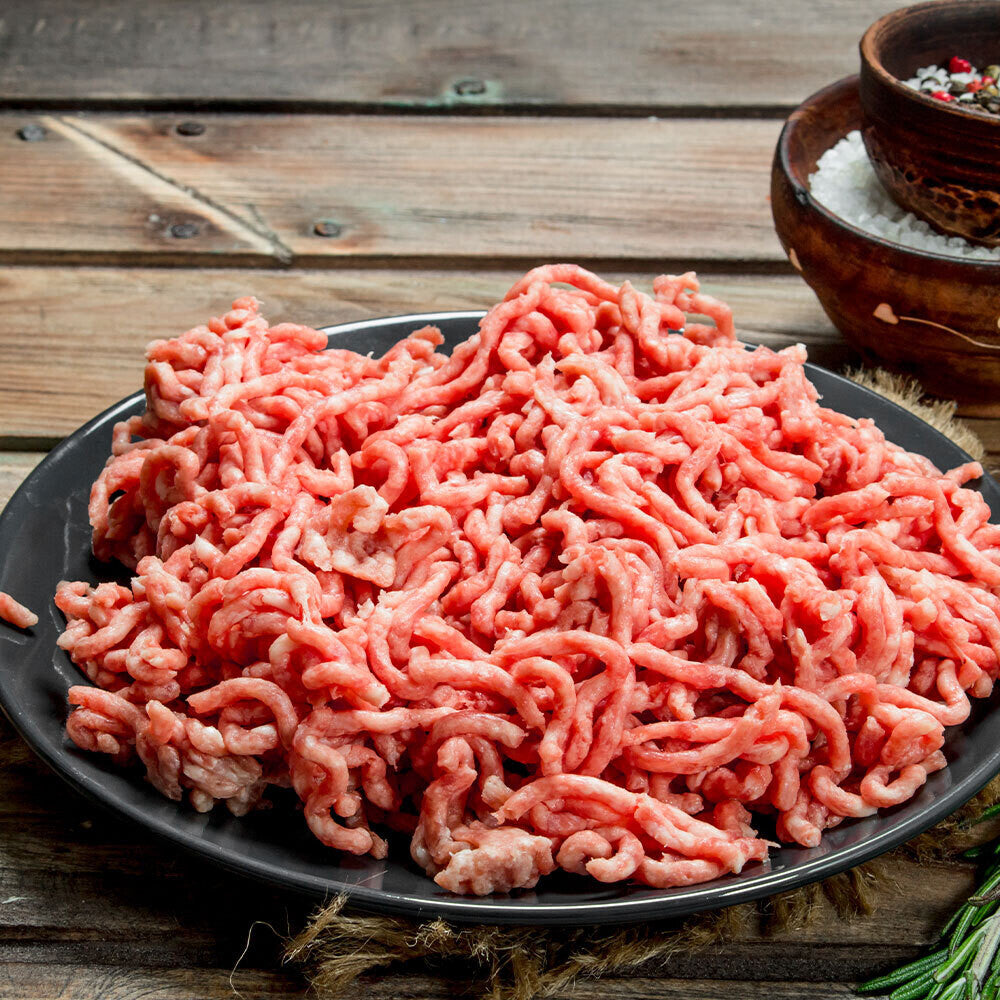
Managing for Microbes: How Biomimicry Builds Better Soil
We don't create healthy soil; nature does. Our role is to manage our farm in ways that support living roots and microbes, encouraging soil aggregation to naturally improve water retention and reduce erosion.
At our farm, this philosophy guides every decision we make. Understanding that nature inherently knows the best ways to build fertile and resilient soil shifts our role from controller to steward. By closely observing natural processes and working alongside them, we support a thriving ecosystem beneath our feet.
The key to this is biomimicry—farming practices inspired by natural ecosystems. When our management strategies focus on maintaining constant plant coverage and promoting biodiversity, we encourage the growth of living roots and diverse microbial communities. These microorganisms and roots work together to form stable soil aggregates, which are tiny clusters of soil particles held firmly together by organic matter.
Soil aggregates might seem insignificant, but their impact on soil health is profound. They create spaces that allow water to infiltrate deeply, reducing runoff during heavy rains. Enhanced infiltration means improved water retention during dry spells, providing crops with critical moisture reserves. Furthermore, the presence of these aggregates increases soil aeration, enabling roots and beneficial organisms to thrive.
Erosion is another challenge that healthy soil aggregates help to mitigate. Stable, aggregated soils are much less vulnerable to being washed away by rain or blown away by wind. This protective quality ensures the sustainability of our land for generations to come.
Our job as farmers, then, isn't about imposing artificial solutions on the soil but rather facilitating conditions that let natural processes flourish. Rotational grazing, cover cropping, and minimizing soil disturbance are practical steps we take to manage our farm effectively, aligning our methods with the wisdom of nature.
In embracing this approach, we reaffirm our commitment to regenerative agriculture. We see clearly that healthy soil isn't just a benefit—it’s fundamental to the resilience and sustainability of our entire farming operation. By managing wisely and humbly, we allow nature to do its best work.
Tags:
Previous post
Why Nutrition Labels Don’t Tell the Whole Story
Next post















